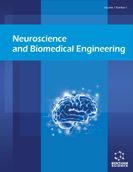Abstract
Background: Pain is a common and troublesome non-motor symptom in Parkinson's disease (PD). Similarly, severe postoperative pain is common after major spinal surgery and may become chronic. The pathophysiologic mechanism underlying those conditions remains unclear. In this study, we recorded pain-related evoked potentials induced by intra-epidermal electrical stimulation in patients with PD and patients with persistent pain after spinal surgery and compared the results between the two groups.
Objective: The purpose of this study was to investigate the pathophysiology of pain in patients with persistent pain after spinal surgery and in patients with PD.
Methods: We recorded pain-related evoked potentials in 23 patients with PD (64.0 years), 6 patients with persistent pain after spinal surgery (69.5 years) and 12 healthy controls (59.6 years).
Results: Major negative (N1) and positive (P1) deflections were observed after each stimulation. The amplitudes between N1 and P1 (N1-P1), which are thought to originate from the anterior cingulate cortex and insula, were significantly lower in both patients with PD and persistent pain after spinal surgery than in the controls (both P<0.01). However, there was no significant difference in N1-P1 amplitude between the patients with PD and the patients with persistent pain after spinal surgery. No significant differences in N1 and P1 latencies were observed among the three groups.
Conclusion: These results suggest that abnormal central processing of pain is present in patients with PD and those with chronic persistent pain after spinal surgery and that these two conditions share similar pathophysiologic mechanisms, at least partially.
Keywords: Parkinson's disease, Persistent pain after spinal surgery, Pain, Pain-related evoked potentials, neurophysiologic, intra-epidermal.
Graphical Abstract
 5
5 2
2 2
2 1
1

